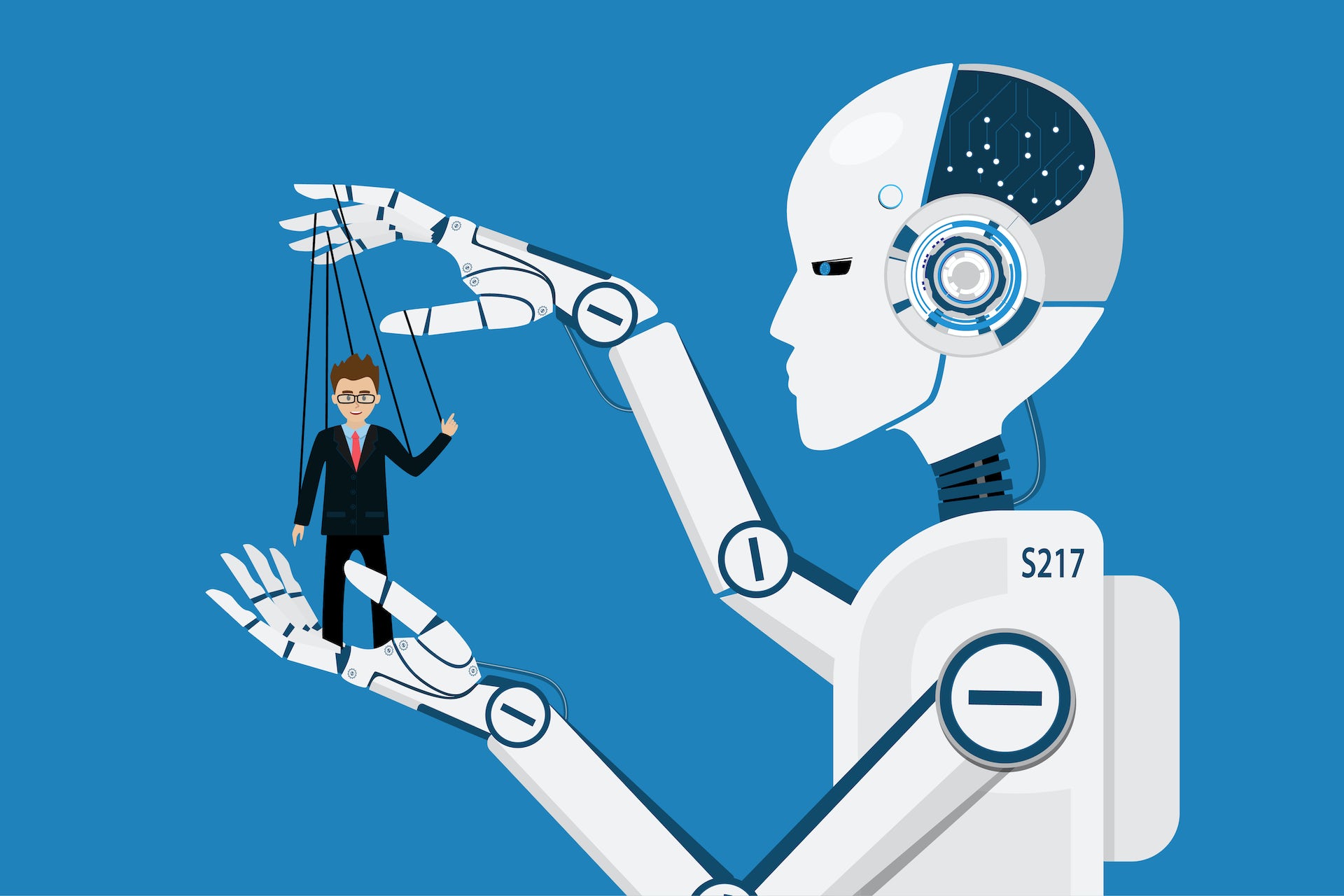How Artificial Intelligence is Portrayed

The depiction of artificial intelligence (AI) can vary depending on the context and objectives. Symbols and elements like robots or mechanisms, computer monitors with code, graphs, schemes, or even diagrams are commonly used. Below, we will examine how it’s presented in cinema, why it’s often portrayed as evil, and how to depict such a “character” more easily.
Artificial Intelligence in Films
Over the last 10-15 years, artificial intelligence in films has been a popular subject. Its portrayal often reflects a wide spectrum of possible scenarios related to technological development and its impact on society. Let’s highlight several films where such a “character” appears:
- A.I. Artificial Intelligence, 2001. Director Steven Spielberg presented a world where AI is among us, exploring emotions and consciousness of an unreal boy named David. The movie probes themes of love, loneliness, and humanity in the context of the relationship between humans and artificial intelligence.
- Blade Runner 2049, 2017. Based on Philip K. Dick’s novel, it features “replicants” or artificial humans existing alongside regular citizens. The film explores questions of identity, empathy, and the meaning of life.
- Ex Machina, 2014. It tells the story of a young programmer testing an AI in a female robot. The focus is on issues of identity, morality, and the boundaries between AI and humanity.
- The Matrix, 1999. The film portrays a world where humanity lives in a virtual reality created by AI, while their real bodies are in a state of slumber. The work explores themes of reality, freedom, and control.
- WarGames, 1983. The film tells about a young hacker who accidentally hacks into a military supercomputer and starts a game that could lead to nuclear war. The movie raises questions about security and interaction.
- The Source Code, 2011. The film combines themes of AI and time by telling about a military pilot who enters into a simulation based on past data to prevent a terrorist attack.
The above are just a few examples of movies where AI plays a significant role. Each explores various aspects of human nature, morality, and the future of technology.
Why AI is Often Portrayed as Evil
When examining the question of how artificial intelligence is portrayed, one tendency is clear: AI is often depicted in a negative light in films and literature. It’s made out to be malevolent or threatening. The reasons are as follows:
- Fear of the unknown. People often fear what they cannot fully understand or control. AI represents a new and complex field of technology, and concerns about its societal impact are expressed in corresponding images.
- Exaggeration and hyperbole. Films and literature often aim to create dramatic and unpredictable plots to attract viewers’ attention. Portraying artificial intelligence as a villain or antagonist adds tension and a dramatic effect to the plot.
- Reflection of social and cultural anxieties. When new technologies, no matter how innovative, are considered, people reflect social and cultural anxieties. Depicting evil AI is a way to transfer concerns to the screen and start a discussion.
- Philosophical questions about morality. Thematic films raise important questions about ethics and the limits of technological advancement. Such plots provoke viewers to contemplate what consequences might arise from the misuse of technology.
- Historical context. With the advancement of AI technologies such as machine learning and neural networks, questions about their impact on job markets, privacy, and even global security have become relevant. These aspects might be reflected in cinema through threatening images.
Not all films and artworks portray AI as an evil “hero”. Many works represent it as a positive or neutral character, helping people to solve problems and improve society.
How to Depict Artificial Intelligence
Finally, here are several ways to depict artificial intelligence when creating your own work:
- Use images reminiscent of neural connections and brain activity, which may include abstract patterns, intertwined lines, and nodes.
- Visualize AI using futuristic elements such as glow, holographic projections, high-tech panels, and interfaces.
- Incorporate images of robots, cyborgs, or mechanical creatures to emphasize the physical aspect of AI and its interaction with the environment.
- Utilize symbols such as gears, microchips, lightning bolts, and transistors to associate the image with technological progress.
- Create digital illustrations that show AI in action, processing data, solving problems, and interacting with the world.
- Apply programming codes, mathematical symbols, and logical diagrams to express the abstract aspects.
- Experiment with graphic designs: gradients, abstract backgrounds, and geometric shapes to create visually interesting images.
- Present AI through interfaces and displays showing data analysis, result output, or user interaction.
- Consider visualizing AI in various scenes such as laboratories, spaceships, future cities, and other locations.
- Create unique and abstract visualizations using geometric shapes, color combinations, and textural elements.
Regardless of the chosen approach, the key goal is to highlight the potential, intellectual capabilities, and impact on the world, and to evoke curiosity and contemplation in viewers.
Summary
Artificial intelligence plays an increasingly significant role in today’s world, affecting everyday life, business, science, and technology development. It represents a powerful tool capable of analyzing data, unlocking new knowledge, and improving processes. However, issues related to ethical aspects, safety, and its impact on the labor market remain pressing.

